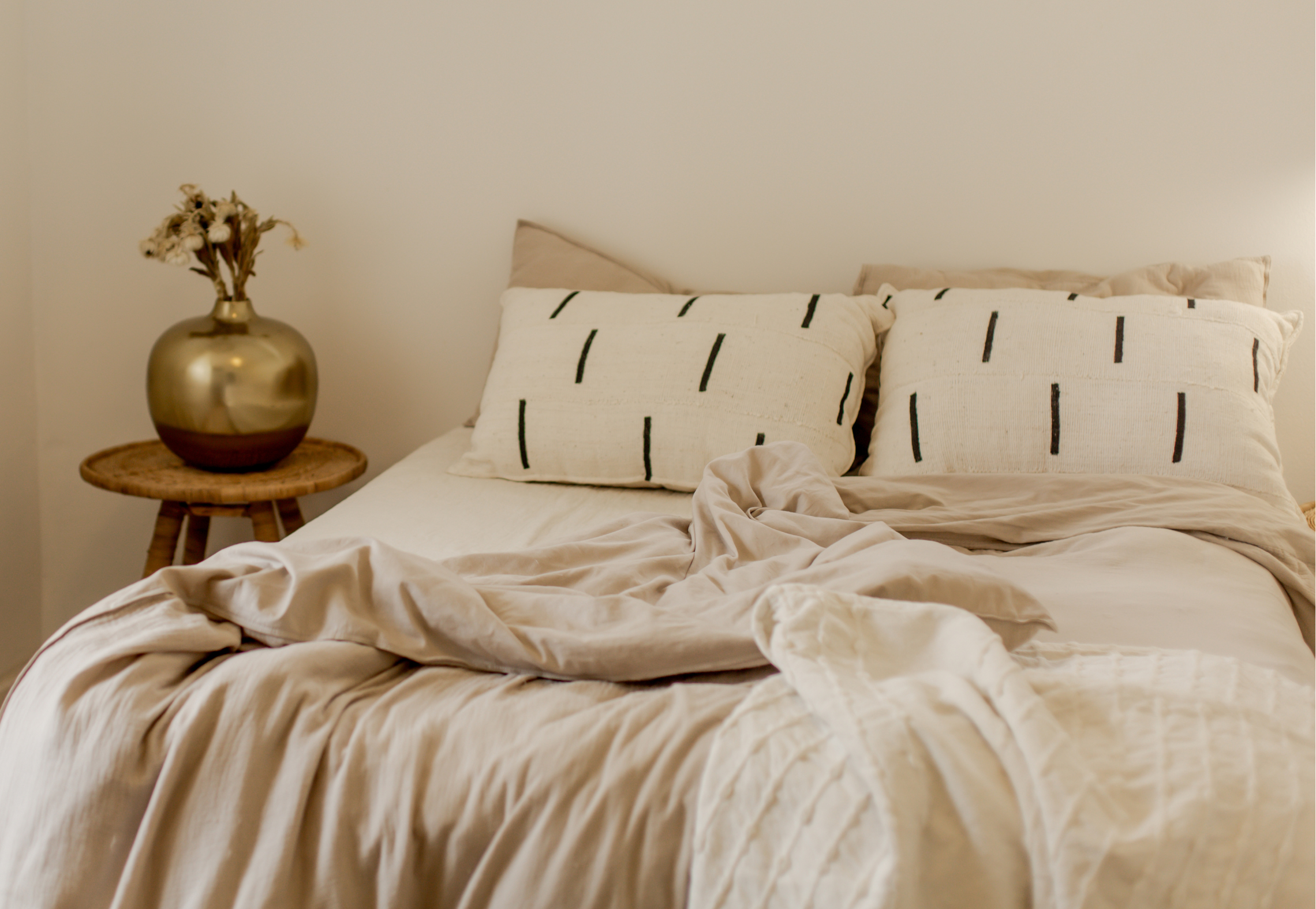When it comes to choosing fabrics for bed linen, tablecloths, curtains, or decorative elements, doubts most often come down to two natural favorites – linen and cotton. Both materials have stood the test of time, both have a rich history, and are rightfully associated with comfort and eco-friendliness. But which one is better…
Linen – a fabric tested by centuries
 Linen is considered one of the oldest and most noble materials. It was valued as far back as Ancient Egypt. Linen was used for clothing in rituals and medicine. Even today, fabric made from natural flax remains a true symbol of quality, safety, and durability.
Linen is considered one of the oldest and most noble materials. It was valued as far back as Ancient Egypt. Linen was used for clothing in rituals and medicine. Even today, fabric made from natural flax remains a true symbol of quality, safety, and durability.
Properties of linen
- Strength and durability. Linen fibers are among the strongest natural ones, so products last for years while retaining their shape and structure.
- Moisture absorption. Linen absorbs moisture well and releases it just as quickly, ensuring a feeling of dryness and freshness.
- Breathability. The fabric “breathes,” creating comfort in hot weather and not overheating the body in colder seasons.
- Hypoallergenic. Suitable for sensitive skin, does not cause irritation.
- Thermoregulation. Linen textiles provide a pleasant sensation both in summer and winter.
Advantages of linen textiles
- Durability. Bed linen, tablecloths, or curtains made of linen become softer and cozier over time.
- Eco-friendliness. Linen is grown without chemicals and is fully biodegradable.
- Aesthetic appeal. Its characteristic texture and gentle sheen add a stylish accent to any interior.
- Antiseptic properties. Linen does not create conditions for bacteria or fungi to develop, which is especially important for bedding.
Linen textiles are associated with nature, simplicity, and harmony. Linen attracts with its tactile qualities, coolness, and the slight “imperfections” of its texture that make every item unique. It is a material that lives together with its owner, adapting and revealing itself over time.
Cotton – timeless relevance
.png) Cotton is rightfully considered the most popular natural material in the world. It is valued for its affordability, comfort, and amazing versatility. Cotton is used for everything – from children’s clothing to home textiles and medical products.
Cotton is rightfully considered the most popular natural material in the world. It is valued for its affordability, comfort, and amazing versatility. Cotton is used for everything – from children’s clothing to home textiles and medical products.
Properties of cotton
- Softness. Cotton fabrics are pleasant to the touch and gentle on the skin.
- Moisture absorption. Perfectly absorbs moisture while allowing the skin to breathe.
- Hypoallergenic. Suitable for children and people with sensitive skin.
- Strength. Despite its softness, cotton fibers are resistant to wear.
- Versatility in processing. Cotton is easy to dye, bleach, and blend with other fibers, offering limitless design possibilities.
Advantages of cotton textiles
- Year-round comfort. Light and refreshing in summer, warm and cozy in winter.
- Practicality. Cotton products are easy to wash, dry quickly, and hold their shape well.
- Eco-friendliness. Its natural origin makes cotton safe and familiar in everyday use.
- Wide application. Bed linen, towels, clothing, curtains, tablecloths – cotton fits naturally into every home.
What makes cotton appealing
Cotton is loved for its natural simplicity. It is a material that brings a sense of comfort and security while remaining stylish and modern. In interior design, cotton textiles add lightness, cleanliness, and freshness. In clothing – they guarantee comfort and freedom of movement.
Cotton is appreciated for its softness, affordability, and ability to create a cozy atmosphere. It is easy to care for and maintains its aesthetic qualities without much effort.
Cotton or Linen. What is “better”
.png) In fact, the choice between linen and cotton depends less on the quality of the materials themselves and more on your habits, interior style, and lifestyle.
In fact, the choice between linen and cotton depends less on the quality of the materials themselves and more on your habits, interior style, and lifestyle.
If durability, eco-friendliness, and the unique texture matter most – choose linen.
If comfort, practicality, and versatility are your priority – choose cotton.
And if you want balance, many manufacturers now offer linen-cotton blends, combining the softness of cotton with the strength of linen, creating harmony between beauty and convenience.
Read HERE about climate-control fabrics
